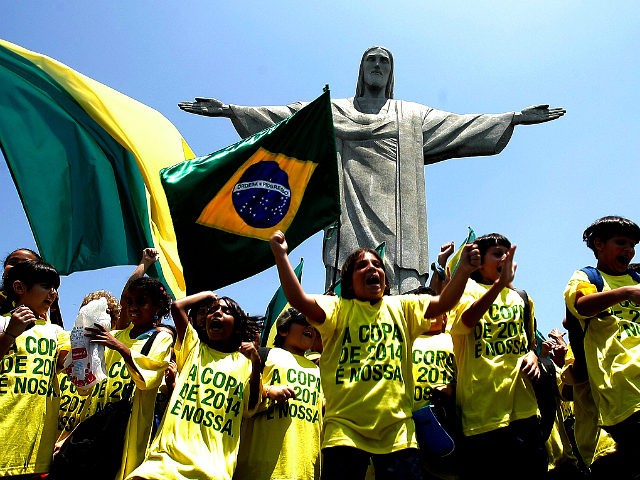In an extensive piece published this week, Foreign Policy explores the past year of attempts to implement affirmative action in the schools of Brazil, a nation with an extraordinary number of mixed-race citizens. Many of these, the report found, applied to affirmative action programs only to be rejected for being too white.
The piece explores the introduction of cotas raciais (“racial quotas”) to high schools and universities, noting that 43 percent of Brazilians self-identify as coming from mixed racial heritage. While the attempt to integrate historically underprivileged races into the nation’s education system began prior to their arrival, the racial quotas became a pet project of the governments of Lula da Silva and Dilma Rousseff, the Workers’ Party (PT) socialist leaders now entangled in the sweeping corruption scandal known as “Operation Car Wash.”
Initial attempts at reserving a percentage of seats in universities for black and indigenous students appeared to fail, as professors observed that the phenotype of their classrooms had changed little. To solve that, some schools held in-person interviews with prospective students, who began coming to their interviews with shaved heads, “beanies, and a tan.”
Ultimately, the government demanded that universities evaluate “phenotypical characteristics,” not family history or membership in a racial group:
Among the criteria to be scored: Is the job candidate’s nose short, wide and flat? How thick are their lips? Are their gums sufficiently purple? What about their lower jaw? Does it protrude forward? Candidates were to be awarded points per item, like “hair type” and “skull shape.”
Brazil’s rich racial diversity – Foreign Policy notes that Brazilians often do not identify as black or white, but a “spectrum of skin colors with a dizzying assortment of names” – has not yielded a color-blind society. “Brazil is the most racist country in the world,” the French journalist and Brazilian resident Alexandra Loras told Veja magazine last year. “It has the second-largest black population in the world and that is not reflected in society.”
She contrasts Brazil with the United States, where, she says, “the U.S. has almost an almost 13 percent black population… but they have a black president and black people in media, show business, Congress, doctors, lawyers, executives.”
Show business has been a particularly high-profile venue of racial dispute in Brazil. In a notable 2013 case, the television network Globo crowned a dark-skinned model their carnival queen. Nayara Justino says she was stripped of her crown for being too black, replaced with a lighter-skinned black woman, after the TV station received too much criticism for so dramatically changing the image of the carnival queen with their choice of a darker woman.
More recently, a public service announcement against pedophilia caused controversy for illustrating the child victim as lighter-skinned than the perceived assailant, triggering cries of racism.
The fight in universities to find a successful way to engineer racial diversity also persists. In late March, the University of Sao Paulo announced it would implement racial quotas for the first time, using the catch-all minority term “pretos, pardos e indígenas (PPIs)” (“black, dark, and indigenous”) for the people eligible to benefit.
Activists on social media have also begun calling for more support for darker students with the hashtag #MeuProfessorRacista (#MyRacistProfessor), which black and mixed-race students have been sharing with anecdotes of experiencing racism in the classroom.

COMMENTS
Please let us know if you're having issues with commenting.